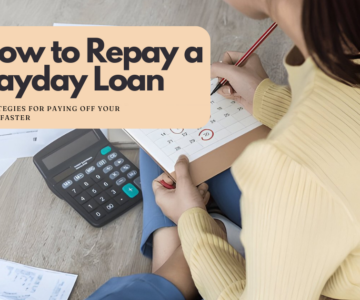 Sleep-as-a-Service: The New Frontier in Health Techby admin / July 31, 2025
Sleep-as-a-Service: The New Frontier in Health Techby admin / July 31, 2025Can a Curriculum Generator Adapt to Changing Student Interests?
Imagine a world where your lesson plans change and evolve in real time building off what students are investigating, their next needed skills and their world’s most current events. That is the promise of a curriculum generator, an AI-powered tool that generates learning paths dynamically. But do they genuinely provide a utility of changing student interests?
Let’s explore what these tools are, what real students and educators say about them and how they are positioned in the context of free AI tools for teachers and the possible future of education.
What is a Curriculum Generator?
A curriculum generator is an AI-based system that produces personalized learning modules. Teachers enter goals or standards and the generator builds content, practice work and assessments.
The best generators extend their functionality: they are able to change lessons based on student behavior, tentatively change paths based on a student’s choices and then suggest next-level topics based on a student’s interests.
Including Student’s Voices: Perceptions, Benefits and Challenges
One key question: Do real students feel seen by generated lessons? Research on student’s voices on generative AI shows mixed reactions:
- Perceptions: Many students appreciate how AI-tailored content allows them to explore topics they care about like coding games, environmental science or cultural storytelling.
- Benefits: Personalized pacing, fewer boring repetitions and more relevant tasks improve engagement.
- Challenges: Some students worry about quality control, privacy or losing the human touch in teaching.
So, when we ask, “Can a curriculum generator adapt to changing student interests?” the student perspective is vital. They value AI tools that listen and respond not rigid templates.
Why Adaptability Matters
Changing student interests are normal. A 12‑year‑old fascinated by marine biology today might switch to robotics tomorrow. A good curriculum generator captures that shift offering pathways that reflect evolving curiosity. That adaptability is key to keeping learners motivated and pushing deeper understanding.
Integrating with Free AI Tools for Teachers & Students
Curriculum generators don’t stand alone. Many teachers use free AI tools for teachers like content summarizers, quiz makers or visual aides to complement lesson plans. Also, students use AI teaching tools for students (like chatbots or study buddies). When all these tools connect, learning becomes more responsive and personalized.
Here’s what that looks like in practice:
- Take a teacher who uses a free AI chatbot to field student questions.
- Based on student interests, the curriculum generator recommends a mini-unit on urban planning or sustainable design.
- A student then works with an AI study companion to explore the optional project more deeply.
Results? An ecosystem where every tool listens, adjusts and evolves with students.
How the Curriculum Generator Adapts
- Interest Tracking
When students choose optional modules or click more often on certain topics, the generator logs that data. Over time it tailors lesson paths toward those preferences.
- Feedback Integration
Quick surveys (“Was this topic interesting?”) help the AI fine-tune choices. If most students enjoy exploring jazz history, future units can integrate creative audio projects.
- Competency-Based Flexibility
Generative AI adapts not just by interest but also by skill. A student strong in logic puzzles might get deeper critical-thinking problems in science.
- Trend Awareness
The smartest generators pull current events or popular culture into lessons. If a movie or viral trend connects to social studies or tech, it weaves it in making learning relevant and timely.
Benefits You Will Notice in the Classroom
Enhanced motivation: Students have more desire to engage when content is aligned with curiosities.
Pacing: Students can skip ahead or step back to previous concepts as they see fit, thanks to this adaptive learning structure.
Teacher time saved: Via free AI tools for education, educators focus more on facilitation than manual planning.
Increased inclusiveness: Adaptive content considerations have improved classrooms for people of all cultural backgrounds, learning styles and emotions.
Quality consistency: Can AI reliably generate accurate, well‑structured units? Teachers must review and guide as needed.
Data privacy: Tracking student choices and feedback must respect security and consent.
AI bias: Interests and trends aren’t equally represented students with niche interests may be underserved.
Human connection: Some students and educators worry that reduced human input may feel impersonal. The ideal model is a combination of the expertise and efficiency of AI with the pedagogy and keen eye of a human educator.
Pilot the tool
- Start with one class or module.
- Gather feedback from students: Was it engaging? Did it adapt to your interest?
Integrate free AI tools
- Use free quiz generators, multimedia creators or study helpers alongside your primary curriculum system.
Collect student input early and often
- Ask: “What topic would you want to continue with next?” or “Did the generated lesson feel relevant?”
- Feed that back into the generator.
Maintain teacher oversight
- Review AI-generated lesson sequences.
- Correct errors, refine phrasing and add human context
FAQs
Q1: Can a curriculum generator truly learn from changing student interests?
A: Yes, top tools track student choices, feedback and performance to adjust module suggestions dynamically.
Q2: Are there any competent free AI tools for teachers, with good integration with curriculum generators?
A: Yes. Free tools often for generating quizzes and visuals, summaries, also some teacher dashboard tools (which usually cost a lot)
Q3: What do students think about shifts to AI-based curriculum?
A: Surveys of students (as recently conducted) indicated that students enjoy lessons that were responsive, while still wanting human vetting and emotional support!
Q4: Does this setup replace human teachers?
A: No. AI is designed to amplify, not replace. The teacher remains crucial for mentorship, discussion and moral insight.
Q5: Does adaptability slow down actual curriculum planning?
A: On the contrary once set up, generators reduce planning time. Teachers can shift saved time for project-based facilitation.
Conclusion
A smart curriculum generator can genuinely adapt to changing student interests creating meaningful, relevant and evolving learning experiences.When you combine a smart curriculum generator with free AI tools for teachers and students, successful teaching is even easier and a lot more fun for everyone.
Teachers: Want to decrease planning time and increase the connection with your class?
Students: Want lessons that relate to your interests?
Give it a go. Ask your students what they want to know about and let the generator do the heavy lifting.



